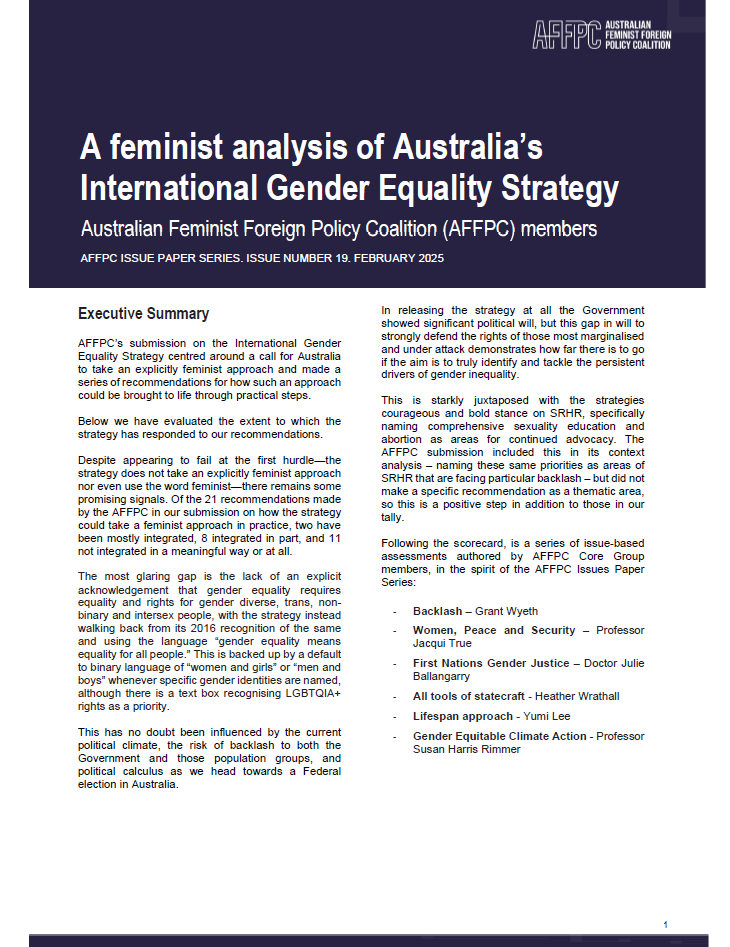Australian Feminist Foreign Policy analysis of Gender Equality Strategy
AFFPC’s submission on the International Gender Equality Strategy centred around a call for Australia to take an explicitly feminist approach and made a series of recommendations for how such an approach could be brought to life through practical steps. In this Issues Paper, we have evaluated the extent to which the strategy has responded to our recommendations.
Despite appearing to fail at the first hurdle—the strategy does not take an explicitly feminist approach nor even use the word feminist—there remains some promising signals. Of the 21 recommendations made by the AFFPC in our submission on how the strategy could take a feminist approach in practice, two have been mostly integrated, 8 integrated in part, and 11 not integrated in a meaningful way or at all.
The most glaring gap is the lack of an explicit acknowledgement that gender equality requires equality and rights for gender diverse, trans, nonbinary and intersex people, with the strategy instead walking back from its 2016 recognition of the same and using the language “gender equality means equality for all people.” This is backed up by a default to binary language of “women and girls” or “men and boys” whenever specific gender identities are named, although there is a text box recognising LGBTQIA+ rights as a priority.
